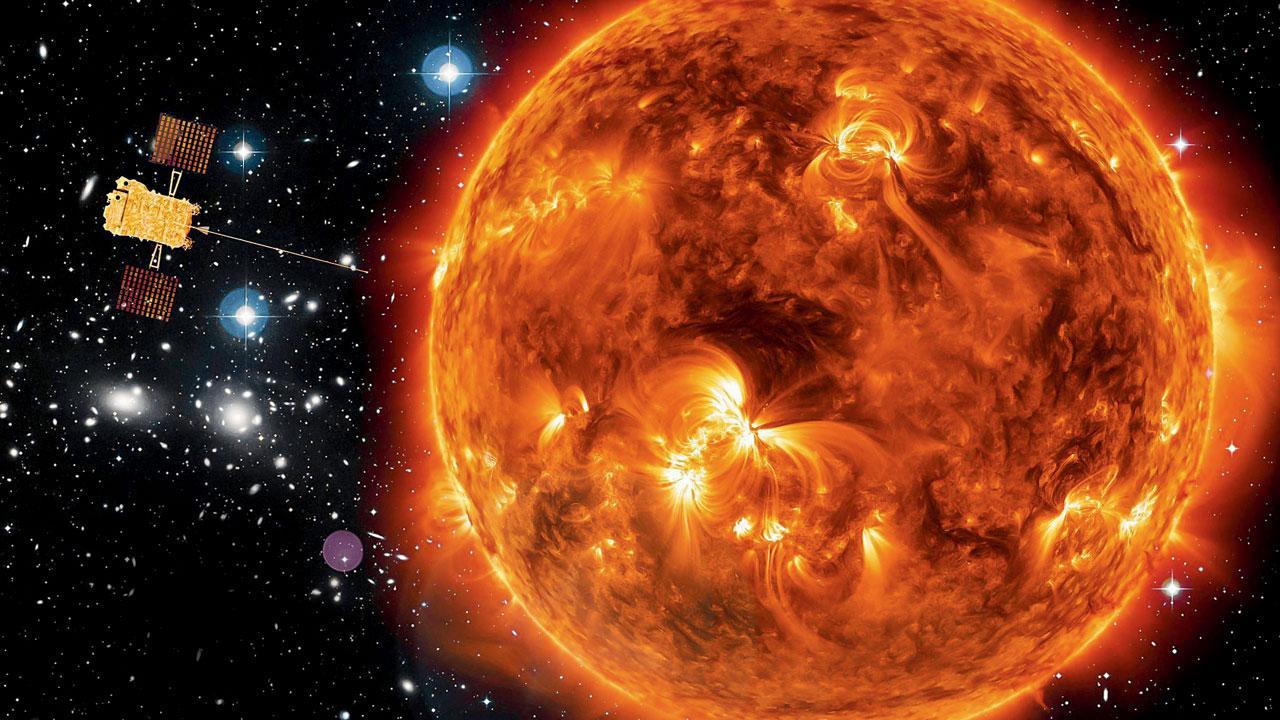The Lagrange point 1 (L1) of the Sun-Earth system is about 1.5 million km from the Earth. It is about one per cent of the total distance between the Earth and the Sun.

MyGov India shares a picture as the ISRO maiden solar mission, Aditya-L1 enters the final manoeuvre to reach its destination on Saturday. Pic/PTI
ISRO on Saturday successfully placed Adiyta-L1, the first space-based Indian observatory to study the Sun, into its destination orbit Lagrange Point-1. PM Narendra Modi made the announcement on ISRO’s latest feat.
ADVERTISEMENT
“India creates yet another landmark. India’s first solar observatory Aditya-L1 reaches its destination. It is a testament to the relentless dedication of our scientists in realising among the most complex and intricate space missions,” he said. “I join the nation in applauding this extraordinary feat. We will continue to pursue new frontiers of science for the benefit of humanity,” he posted on X.
The Lagrange point 1 (L1) of the Sun-Earth system is about 1.5 million km from the Earth. It is about one per cent of the total distance between the Earth and the Sun. A satellite in a halo orbit around the L1 point has the major advantage of continuously viewing the Sun without any eclipses, ISRO officials said, adding, this will provide a greater advantage in observing solar activities and their effect on space weather in real time.
A Polar Satellite Launch Vehicle (PSLV-C57) launched the Aditya-L1 spacecraft from the second launch pad of Satish Dhawan Space Centre (SDSC), Sriharikota, on September 2, 2023. After a flight duration of 63 minutes and 20 seconds, it was successfully injected into an elliptical orbit of 235x19500 km around the Earth.
The spacecraft underwent a series of maneuvers having escaped the Earth’s sphere of influence. The spacecraft carries seven payloads to observe the photosphere, chromosphere and the outermost layers of the Sun (the corona) using electromagnetic and particle and magnetic field detectors.
“Using the special vantage point L1, four payloads directly view the Sun and the remaining three payloads carry out in-situ studies of particles and fields at the Lagrange point L1, thus providing important scientific studies of the propagatory effect of solar dynamics,” said the space agency.
This story has been sourced from a third party syndicated feed, agencies. Mid-day accepts no responsibility or liability for its dependability, trustworthiness, reliability and data of the text. Mid-day management/mid-day.com reserves the sole right to alter, delete or remove (without notice) the content in its absolute discretion for any reason whatsoever
 Subscribe today by clicking the link and stay updated with the latest news!" Click here!
Subscribe today by clicking the link and stay updated with the latest news!" Click here!







